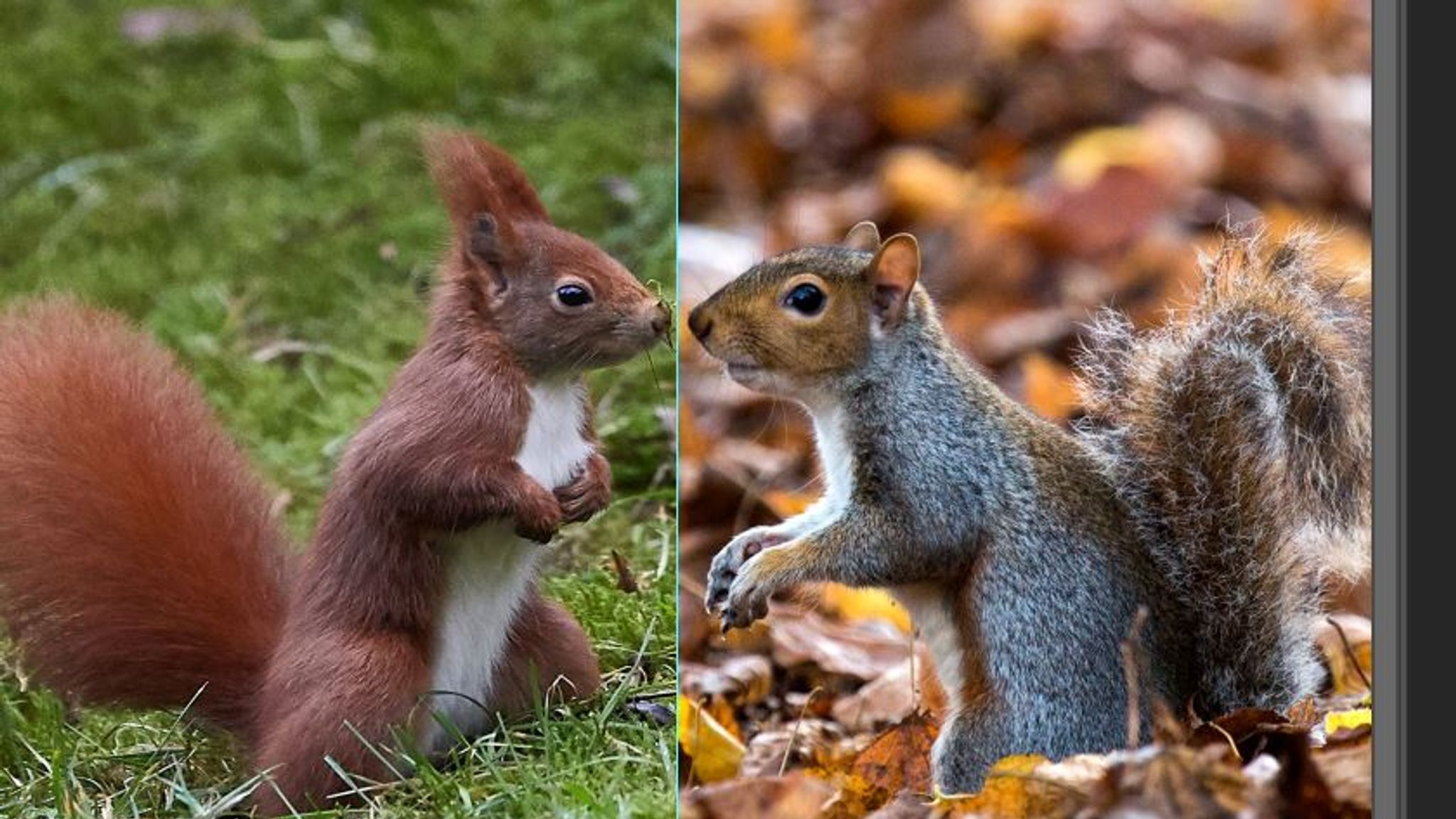The red squirrel or Eurasian red squirrel is a species of tree squirrel common throughout Eurasia. It is one of Britain’s most iconic and beloved mammals. Once the most common squirrel in the UK, they are now under threat. In Great Britain, Ireland, and in Italy numbers have decreased drastically in recent years. This decline is associated with the introduction by humans of the non-native invasive eastern grey squirrel from North America.
The Red Squirrel South West project is committed to the restoration and protection of red squirrels in the South West of England.
Red Squirrels
The Eurasian red squirrel is the UK’s only native squirrel and has become one of the most beloved mascots of British wildlife. They are naturally found across most of Europe and part of Asia, but are unfortunately under threat. Habitat loss poses a threat towards the species as a whole but the introduction of the Eastern grey squirrel to the UK and Ireland has shown to have the largest impact on the red population. The estimated population in Great Britain is down to an estimated 120,000 for reds compared to an estimated 3,000,000 for greys which means reds now run the risk of extinction. As a result of this red squirrels are classed as a priority species in the UK and are now protected under law.
Red squirrels are tree squirrels, preferring to spend the majority of their time in the canopy, and are found in mixed broad-leaf and coniferous woodlands. They have a varied diet which includes seeds, nuts, buds, flowers, fruit and even occasionally insects and eggs! Although they do not hibernate, they have been known to store – or cache – more food ready for the winter and periods where food is harder to get. They will also spend more time in their nests, known as dreys, when the weather is more difficult.
Famous for their ‘tufty’ ears, their coats change throughout the year meaning colourings can differ from a bright ginger in the summer to a dark brown in the winter, with some even dropping their ear tufts when changing to their summer coat.
Red squirrels live to around 5-6 years in the wild and sometimes longer when in captivity. They can start reproducing after the first year with their breeding season falling between March and July. Successful reds can have 2 litters a year, averaging 2-3 babies at a time, known as kittens, but some can have as many as 6 in a litter!
Threats caused by Greys
Since 1870, when the grey squirrel was introduced to Britain from North America causing the red squirrel population to drop.
Grey squirrels are a threat to reds for a number of reasons:
- Grey squirrels carry the squirrelpox virus, which they themselves are immune too, but is fatal to reds. Reds and greys do not have to come into direct contact for the virus to spread, red squirrels can contract SQPV through sharing feeders or woodlands that are also used by greys.
- Greys are able to digest unripe foods such as acorns, something that reds are unable to do. This means that food sources are taken by the greys before they are able to be reached by the reds.
- When put under pressure, such as loss of territory and food sources, red squirrels do not breed.
Red squirrels have also suffered from habitat loss. Areas where woodland has been destroyed or split due to development has taken away the red squirrel’s natural home. This leads to less opportunities to nest and forage, making it harder for reds to thrive in the wild. Combining this issue with the natural competition from greys and the squirrelpox virus, it is extremely difficult to sustain viable red squirrel populations in large areas of the UK and Ireland without intervention.
Grey Squirrels
Grey squirrels are not just a threat to reds, they also raid bird nests, taking eggs and nestlings. Research has found that greys have played a major role in an 85% decline of spotted flycatchers in the last 50 years and 57% decline of wood warblers in the last 23 years.
Greys cause considerable damage to broadleaf woods by bark stripping, this action kills or deforms the tree and leads to the destruction of woodland and a loss of timber value. The European Squirrel Initiative has shown that greys cost the forestry industry in excess of £40 million per year through tree damage.
Latest figures show a hectare of undamaged 150-year-old oak is currently estimated to value at around £54,370/ha, compared with a hectare of grey squirrel damaged 150-year-old oak valued at £7140/ha where squirrels have not been controlled – a difference of £47,230!
Greys are especially concerning to The National Forest due to their specific targeting of Oak – the tree that makes up a large proportion of our woodlands. They will also target; Beech, Field Maple, Hornbeam, Silver Birch, Sweet Chestnut, Sycamore and Willow, amongst others!
Control
There are an estimated 3 million grey squirrels throughout the UK.
Many individuals and voluntary organisations already control greys in the South West area. Through monitoring populations and targeted control, we can help restore our biodiversity.
By creating a network of likeminded people controlling grey numbers we will be able to restore our woodlands and provide a safe environment to reintroduce the red squirrel in the South West.
Currently there is a 5-year project being carried out by UK Squirrel Accord looking into fertility treatment for grey squirrels. While this research is ongoing, previous studies have shown that oral contraceptives have been successful with rats.
There is some research from areas such as Ireland and Scotland showing that grey squirrel populations have declined as a result of pine marten reintroductions which provides some hope for red squirrel numbers in these areas.
The team at Red Squirrel South-West have been continuing with preparations for their grey squirrel clearance project on Exmoor National Park. The project, instigated by ENP is looking at removing grey squirrels from the area, which in turn will help to regenerate the natural Sessile Oak woodland of the area, and ultimately lead to the re-introduction of red squirrels back to Exmoor. With the valuable funding required even harder to attain than before, we continue to try and guarantee the money to begin this ground-breaking and necessary work as soon as possible. Landowners, rangers and teams of volunteers stretching across the 35-mile coats are standing-by, eager to begin this important work.
Differences to Look out For
- The main difference between adult reds and greys is size: a red is small, agile and dainty. Grey squirrels, in comparison, look big and chunky. Red squirrels weigh between 270-360g and with a head and body length of 19-23cm. Grey squirrels are much larger, typically weighing between 400-720g with a head and body length of 25-30cm.
- Their fur - red/ginger against grey/white
(not definitive though) Coat colour can vary both geographically (i.e squirrels in different regions) and seasonally, as squirrels moult their body fur twice a year. The moult that occurs in the spring starts on the head and moves along the body, whereas the sequence in reversed in the autumn. Red squirrels have ear tufts in the winter but they usually moult out and loose them in the summer. Grey squirrels never have ear tufts. - One very clear distinguishing feature of a grey is that every hair on the tail is tipped with white, giving a ‘halo’ effect. Although red squirrels may have varying colour tails the hair will all be one colour.
Red Squirrels (left) vs Grey Squirrels (right)


